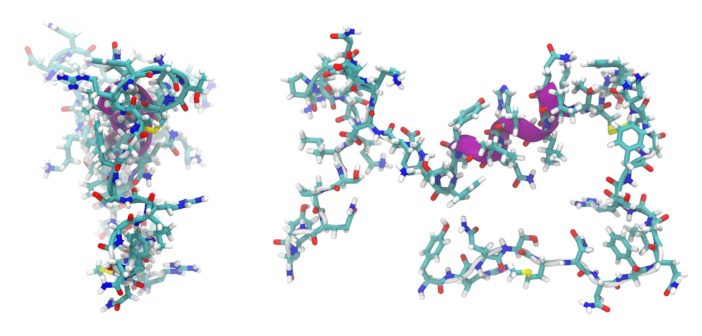Naturally, peptides are contained in foods. Partial hydrolysis of protein polypeptide chains comes from the simple type of peptide. Non-protein peptides are also present in meals.
Because they are structurally distinct from protein-derived peptides, these peptides may be shielded from peptidases’ activity. Peptides such as tamoxifen citrate are readily available in stores.
Tripeptide glutathione is an example of a non-protein peptide present in cells of all higher mammals. It comprises a glutamic acid residue attached to its β-carboxy group via a unique peptide bond. Glutathione is a cofactor of glyoxalase, functions in active amino acid transport, works as a lipid antioxidant, and is an activator for specific enzymes. Dipeptides with l-histidine- or l-methyl-l-histidine-bonded -amino acids (alanine) are also found in vertebrates, including carnosine, anseptide, and balenine. These histidine dipeptides are present in various muscles of different animals.
Peptides may also be found in meals since they have been employed as additives for increasing food quality, including sweeteners and enhancers of tastes or bulking agents for light beverages. Specific peptides formed from protein enzymatic hydrolysis have more outstanding functional capabilities than parent proteins and are consequently employed in various functions in the food business.
Peptides have smaller molecular weight, more minor side structures, and more ionizable and hydrophobic group exposure than natural proteins. These data demonstrate that solubility, surface activity, and emulsifying qualities may differ from the intact protein.
Enzymatic hydrolysis has improved the emulsifying properties of the different proteins in the mixture. Peptides limit the self-oxidation of linolenic acid and hence have possibly been effective in fermented food and protein hydrolysates as antioxidants. Due to their unique functional features, the enzyme hydrolysates of soya bean protection have been employed in beverages. In order to boost solubility and vary their functional features, hydrolyzed gluten (zene, gliadins) hydrophobial proteins have been created.
The peptide analysis of trypsin enzyme hydrolysates may be utilized to validate the presence in meat products of non-meat proteins such as soybeans. Typical casein peptides of kinds of milk are varied and may be used to identify milk mixes.
Applications of Peptides
Applications of peptides are diverse with various kinds of peptides. In reality, transporting many chemicals and particles into cells may be done using cell-penetrating peptides (CPP). By employing CPPs and synthetic peptides, biological research is rapidly advancing and gaining progress. The diagnostics of illnesses and future medication components indicate a bright future via the delivery of such therapeutic molecules to cells and tissues, including nucleic acids, therapeutic goods, and imaging agents. These peptides are straightforward to produce, from little chemical medications to large plasmid DNA. They are also convenient and straightforward to distinguish. CPPs may be altered to achieve high gene expression levels, silence genes, and even tumor targeting. Effective means of distribution may be created to target specific corrupt cells or tissues after they have been functionalized or chemically changed.
In addition to the medical and pharmacological arena, synthetic peptides have also found their positions in biochemistry, molecular biology, and immunology. Researchers began the creation of synthetic peptides partly because of the available secondary structure prediction technologies and the finding of protein fragments that surpass 100 residues. They may be extracted or preserved by synthetic peptides.
Synthetic peptides are incredibly valuable. It’s essential to keep in mind that their conformational features must be taken into account. These are determined through Amino acid sequencing, medium polarity, and interactions between bands. On the other hand, molecular biologists undertake DNA operations of protein engineering, whereas peptide chemists are commencing these efforts.
Model proteins and synthetic mini-proteins were used to study the structure/activity correlations. Because of these initiatives, researchers are now participating in current peptide application studies. These include biotechnology businesses that have identified novel peptides with beneficial pharmaceutical characteristics. The regular production of large polypeptides or small proteins of 30-100 amino acids boosted the use of peptides. As a researcher, you can find peptides for sale online for research purposes only.




